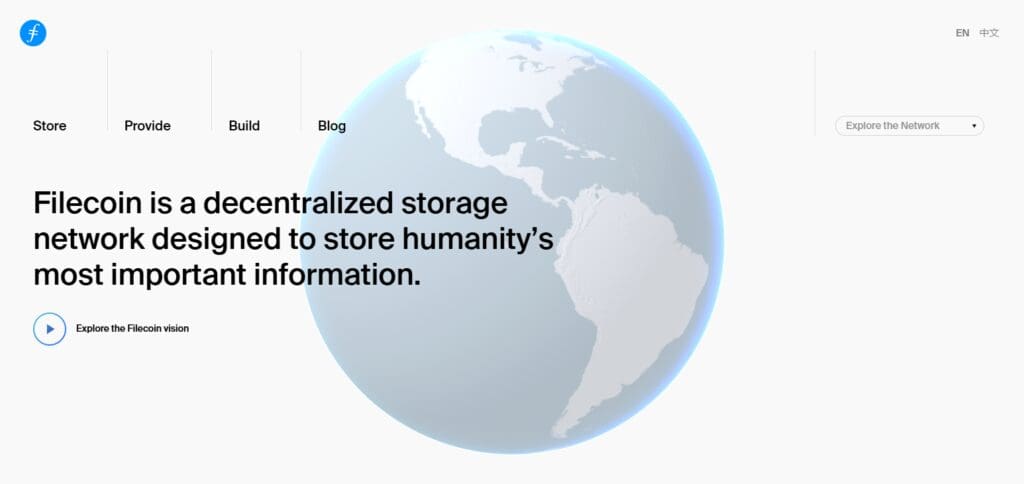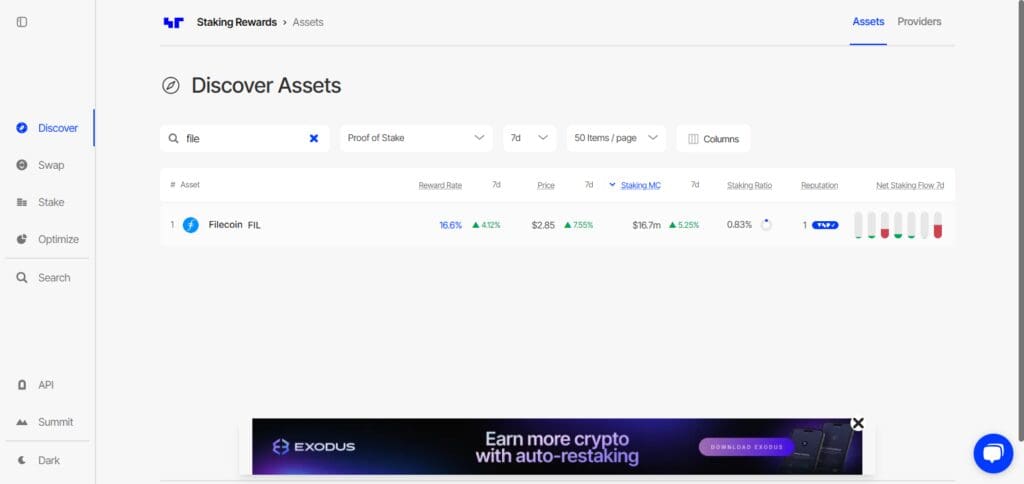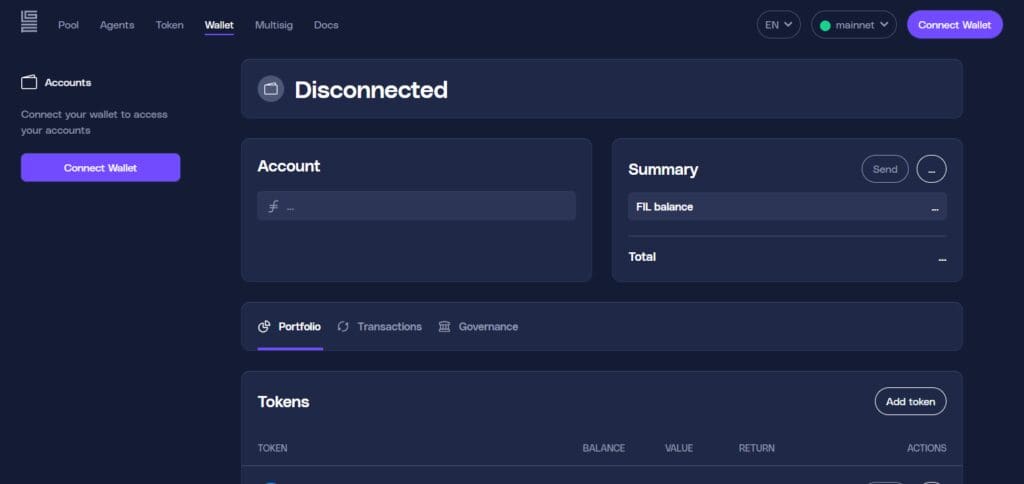In this article, I will share How to Stake Filecoin rewards by supporting the decentralized storage network while staking Filecoin (FIL).
You’ll understand the entire procedure from acquiring FIL, selecting a staking platform, securing your wallet, and delegating tokens.
This guide helps novice, intermediate, and expert investors stake FIL and earn maximum returns.
What is Stake Filecoin?
When we stake Filecoin tokens (FIL), we earn rewards while locking tokens to support the storage and retrieval operations of the network.
Unlike more modern proof-of-stake (PoS) systems, Filecoin utilizes a PoSt and PoRep methodology, wherein miners provide storage space instead of holding tokens.

At the moment, Filecoin staking is primarily applicable to storage providers that stake FIL as a put up collateral guarantee for reliable storage services.
Third party platforms, however, provide liquid staking options where users can stake FIL and earn rewards without the need of a storage hardware.
How to Stake Filecoin?
Step 1. Explore Staking Opportunities on StakingRewards.com
Open Staking Rewards: Once on the page, either input “Filecoin (FIL)” directly in the search tab or look through the available assets.

Verify file coin staking opportunity on StakingRewards: Make sure you visit the file coin page wherein you can find the reward rates, in past it was roughly 16.21 per annum and some other critical metrics like ratio of staking, market cap, provider of staking, etc. This is important to evaluate assess the expected revenue and risks towards it.
Look for other providers: On sowing.com, there are other means or platforms that will allow you to stake FIL which includes custodial exchange such as Binance or DeFi alternatives like Glif.
Keep in mi9d however that on throughout Filecoin staking will inevitably necessitate delegating FIL to some sort of pools of liquidity or storage providers, not traditional proof of stake staking.
Step 2. Get Filecoin.
Buy FIL: Use a crypto exchange like Kraken, Binance, and Coinbase for purchasing FIL in case you don’t currently have it.
Confirm that you possess enough FIL that fulfills the minimum requirement of the provider that will be selected (this often tends to be equal or more than 1 FIL).
Creating a Wallet: Pick a wallet that supports file coin such as the below:
Ledger: It is also used as hardware wallet with MetaMask so that the security will be hardware secured.
Glif Wallet: Another customized option for file coin that works on browser.
Step 3: Move FIL to Your Wallet
Withdraw FIL from Exchange: Transfer your FIL to your wallet address. If you are using MetaMask, ensure it is switched to Filecoin network (network ID: f or 314 for Mainnet).
Copy your wallet’s FIL address (starts with f1 or f3).
Paste it in the exchange withdrawal page and authorize the transaction.
Verify Receipt: After the transaction is confirmed (typically a few minutes), check your wallet balance to see if the funds are visible.
Step 4: Select A Method Of Staking
Option 1: Delegate to a Staking Provider via Glif (Decentralized) Glif acts as a popular staking interface where users can stake FIL by depositing it into liquidity pools linked with Filecoin storage providers.
Option 2: Stake on an Exchange (Custodial) Some exchanges like Binance or Gemini might provide FIL staking services, however, you’ll lose access to your private keys.
Step 5: Stake FIL Using Glif
Visit Glif.io: Navigate to Glif website (https://glif.io).

Connect Your Wallet
Select “Connect Wallet” and click on MetaMask (or any other compatible wallet).
Approve the connection request coming from your wallet.
Deposit FIL:
Proceed to the Stake section.
Fill in the amount of FIL you want to stake (be sure to leave some FIL for gas fees, usually a tiny percentage).
Click “Deposit” and approve the transaction from your wallet.
Receive iFIL: Staking through Glif yields iFIL (liquid staking token) that stands for your staked FIL plus its rewards which can be redeemed. If necessary, add iFIL token to Metamask manually (Glif has the token address).
Step 6: Keep Track of Your Staking Rewards
Confirm in the Glif Dashboard: Glif shows the amount of FIL you have staked as well as the rewards accrued over time.
Go to StakingRewards.com: Go back to StakingRewards.com to check the stake performance of filecoin and compare with other stakes. You can use the FIL Staking Calculator, simply add the amount you have staked and the duration to receive estimates for rewards.
Reward Distribution: The rewards depend on the provider’s terms with Glif rewards accruing and with rising iFIL value relative to FIL.
Step 7: Control Your Stake
Unstaking (if applicable): Some places like Glif come with lockup features or delayed withdrawal. Confirm the terms of your provider before staking.
Over at Glif: Once the withdrawal feature goes live, head to withdraw, put in the iFIL amount and exchange it for FIL.
Reinvest Rewards: More rewards can be accumulated by staking earned FIL or iFIL.
Best Places To Stake Filecoin (FIL)
Binance
With the broadest income opportunities from the most recent innovations, Binance also offers a comprehensive staking platform.
Users can choose to participate in on-chain staking or receive flexible returns using Simple Earn.

From the perspective of both conventional and DeFi staking, Binance supports the most number of cryptocurrencies.
Its simple interface and strong security features ensure that users have the best staking experience.
Crypto.com
Staking assets to generate revenue can be done at any time with a versatile staking platform at Crypto.com, which provides a place to lock assets.

Users can unstake anytime after activation, which makes the platform very flexible. Automated payouts and secure blockchain transactions along with other services make staking at Crypto.com easy and rewarding.
Gemini
Though Gemini is a well-known cryptocurrency exchange it also provides the opportunity to earn crypto through a product called Gemini Earn.

It can be loosely termed as staking because instead of earning, users can simply lend their crypto to earn competitive interest rates.
Other than 40 cryptocurrencies can be used to maximize earnings with Gemini Earn, as users can receive up to 4.55% APY on FIL.
Primary Advantages of Staking Filecoin (FIL)
Staking Filecoin (FIL) has various benefits, including earning rewards while supporting decentralized storage systems. It passive income opportunities, and also enhances the network infrastructure. The benefits are detailed below.
1. Profitable Staking Returns
Competitive returns are expected when staking FIL, with potential Annual Percentage Rates (APR) surpassing 10.34%. For example, staking 100 FIL for a year could generate an additional 10 FIL, proving how staking can be a beneficial investment strategy.
2. Income Without Participation
Users can automatically earn rewards passively without active trading through holding and staking FIL. Practically, investors receive consistent payouts while passively holding access tokens, which guarantees them a stable income stream.
3. The Ability for Growth Over Time
As the value of Filecoin increases, the appreciation of the staked tokens as well as the earned rewards does too. This makes staking FIL an ideal option for a long-term investment, providing gains to be maximized as well as support to a growing ecosystem.
4. Improved Decentralized Storage Support
Investors contribute towards a decentralized and secure storage network through staking FIL. This lowers the dependency on cloud services while improving data security, Filecon censorship resistance, and infrastructure reliability.
Conclusion
Earning reward FIL tokens is effortless when you stake them as a way to maintain the decentralized storage network. All you need is to acquire FIL tokens, set up a secure wallet, pick a staking platform, and stake your tokens.
GLIF, Binance, or any other reputable staking service allows you to stake FIL tokens; however you should always pay attention to the fees they charge, the lock-up periods, and the security that your tokens will have while providing them. Keeping an eye on rewards and changes in the staking policies enables you to make the most out of the service.
With stakeable FIL tokens, not only do you increase the investment returns, you also create a powerful, secure, and better internet with no censorship.










